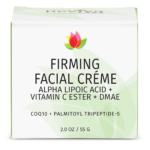Chelating agent
Chelating agents are chemical compounds that react with metal ions to form a stable, water-soluble complex. They are also known as chelants, chelators, or sequestering agents. Chelating agents have a ring-like center which forms at least two bonds with the metal ion allowing it to be excreted.
Related Reading:
https://en.wikipedia.org/wiki/Chelation
Chelation is a type of bonding of ions and molecules to metal ions. It involves the formation or presence of two or more separate coordinate bonds between a polydentate (multiple bonded) ligand and a single central metal atom. These ligands are called chelants, chelators, chelating agents, or sequestering agents. They are usually organic compounds, but this is not a necessity, as in the case of zinc and its use as a maintenance therapy to prevent the absorption of copper in people with Wilson's disease.
Chelation is useful in applications such as providing nutritional supplements, in chelation therapy to remove toxic metals from the body, as contrast agents in MRI scanning, in manufacturing using homogeneous catalysts, in chemical water treatment to assist in the removal of metals, and in fertilizers.









